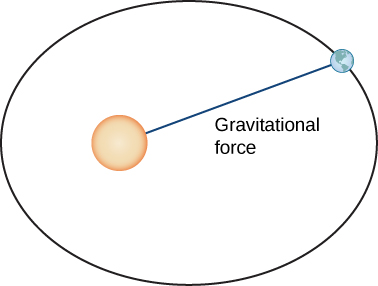| << Chapter < Page | Chapter >> Page > |
for any planet in the solar system, where is the period of that planet measured in Earth years and is the average distance from that planet to the Sun measured in astronomical units. Therefore, if we know the average distance from a planet to the Sun (in astronomical units), we can then calculate the length of its year (in Earth years), and vice versa.
Kepler’s laws were formulated based on observations from Brahe; however, they were not proved formally until Sir Isaac Newton was able to apply calculus. Furthermore, Newton was able to generalize Kepler’s third law to other orbital systems, such as a moon orbiting around a planet. Kepler’s original third law only applies to objects orbiting the Sun.
Let’s now prove Kepler’s first law using the calculus of vector-valued functions. First we need a coordinate system. Let’s place the Sun at the origin of the coordinate system and let the vector-valued function represent the location of a planet as a function of time. Newton proved Kepler’s law using his second law of motion and his law of universal gravitation. Newton’s second law of motion can be written as where F represents the net force acting on the planet. His law of universal gravitation can be written in the form which indicates that the force resulting from the gravitational attraction of the Sun points back toward the Sun, and has magnitude ( [link] ).

Setting these two forces equal to each other, and using the fact that we obtain
which can be rewritten as
This equation shows that the vectors and r are parallel to each other, so Next, let’s differentiate with respect to time:
This proves that is a constant vector, which we call C . Since and v are both perpendicular to C for all values of t , they must lie in a plane perpendicular to C . Therefore, the motion of the planet lies in a plane.
Next we calculate the expression
The last equality in [link] is from the triple cross product formula ( Introduction to Vectors in Space ). We need an expression for To calculate this, we differentiate with respect to time:
Since we also have
Combining [link] and [link] , we get
Substituting this into [link] gives us
However,
Therefore, [link] becomes
Since C is a constant vector, we can integrate both sides and obtain
where D is a constant vector. Our goal is to solve for Let’s start by calculating
However, so
Since we have
Note that where is the angle between r and D. Therefore,

Notification Switch
Would you like to follow the 'Calculus volume 3' conversation and receive update notifications?